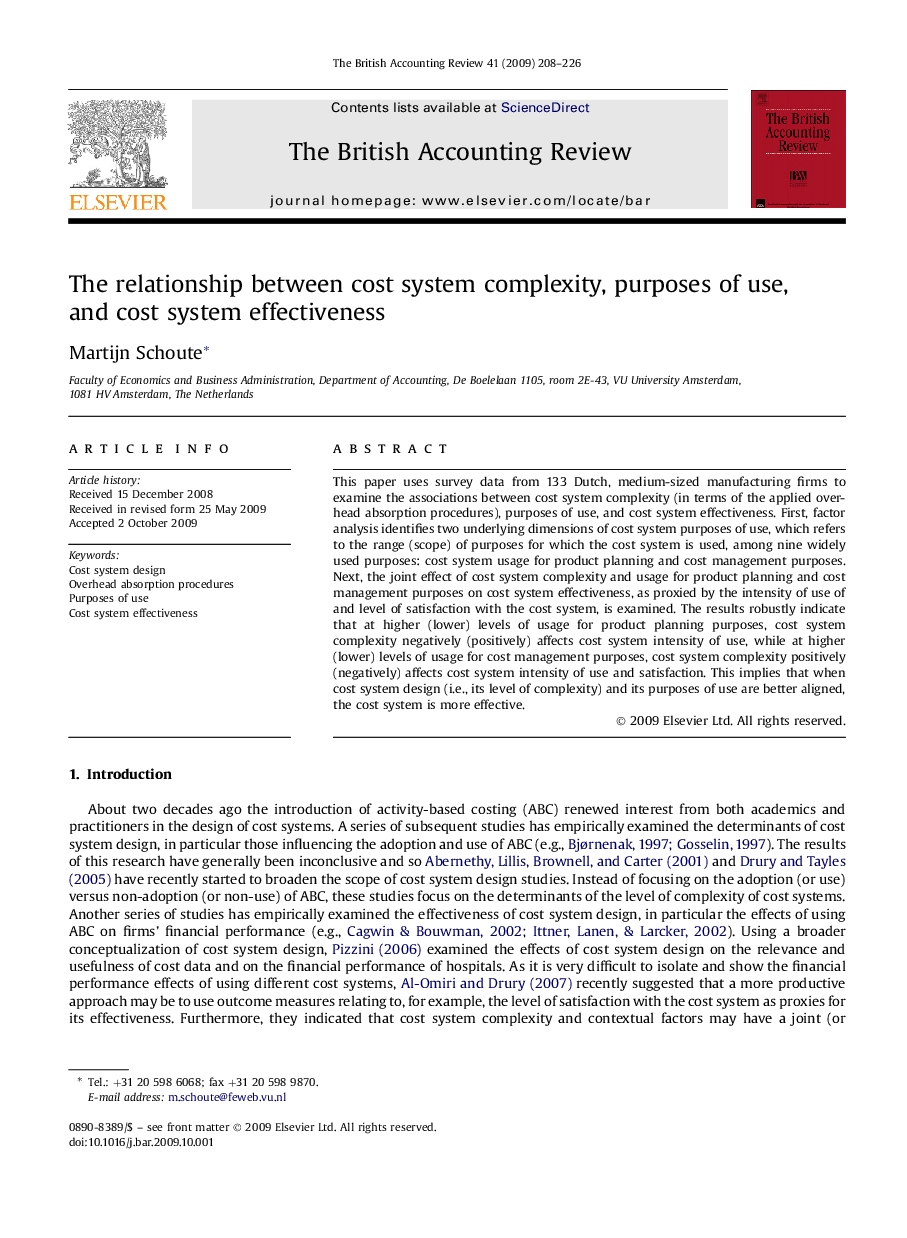| Article ID | Journal | Published Year | Pages | File Type |
|---|---|---|---|---|
| 1004107 | The British Accounting Review | 2009 | 19 Pages |
This paper uses survey data from 133 Dutch, medium-sized manufacturing firms to examine the associations between cost system complexity (in terms of the applied overhead absorption procedures), purposes of use, and cost system effectiveness. First, factor analysis identifies two underlying dimensions of cost system purposes of use, which refers to the range (scope) of purposes for which the cost system is used, among nine widely used purposes: cost system usage for product planning and cost management purposes. Next, the joint effect of cost system complexity and usage for product planning and cost management purposes on cost system effectiveness, as proxied by the intensity of use of and level of satisfaction with the cost system, is examined. The results robustly indicate that at higher (lower) levels of usage for product planning purposes, cost system complexity negatively (positively) affects cost system intensity of use, while at higher (lower) levels of usage for cost management purposes, cost system complexity positively (negatively) affects cost system intensity of use and satisfaction. This implies that when cost system design (i.e., its level of complexity) and its purposes of use are better aligned, the cost system is more effective.
